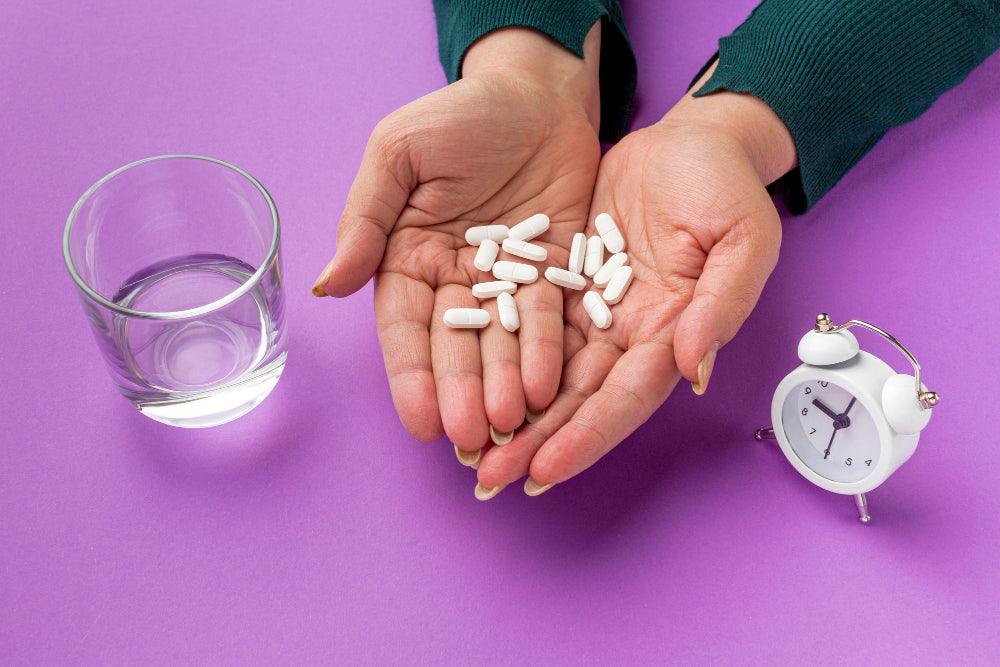Is 3 Days Of Antibiotics Enough For A UTI?


A urinary tract infection (UTI) is a common ailment that affects many people worldwide. The primary mode of treatment for a UTI is antibiotics. One of the key questions that arise regarding their treatment is, "Is 3 days of antibiotics enough for a UTI?" The answer is multifaceted and involves understanding the nature of UTIs, the types of antibiotics used, and the individual needs of the patient.
The question of whether 3 days of antibiotics is enough for a UTI is crucial for many patients. UTIs are infections that affect any part of the urinary system, including the kidneys, bladder, ureters, and urethra. Dr. Fiona Peterson, a leading urologist from St. George's Hospital in London, states, "Urinary Tract Infections are typically characterised by a strong urge to urinate, a burning sensation when urinating, and cloudy or strong-smelling urine." The presence of these symptoms often indicates the need for prompt medical attention and intervention.
UTIs are usually caused by bacteria, predominantly Escherichia coli (E. coli), which enters the urinary system. Other bacteria, such as Staphylococcus saprophyticus, can also lead to UTIs but are less common. Dr. Susan Mitchell, a microbiologist from Cambridge University, says, "The key to treating a UTI effectively is identifying the causative agent early on and administering the appropriate antibiotics." Symptoms can range from mild discomfort when urinating to severe pain, blood in the urine, and even fever.
The efficacy of the antibiotic treatment hinges upon the timely diagnosis and correct antibiotic selection. "Appropriate antibiotic therapy ensures rapid recovery, reduces complications, and prevents recurrence," notes Dr. Alan Matthews, a senior pharmacist in Bristol. A UTI left untreated or improperly treated can lead to grave complications, including kidney infections and sepsis.
Urinary tract infections (UTIs) are primarily caused by bacteria that enter the urinary tract, leading to inflammation and symptoms such as burning during urination, frequent urination, and lower abdominal pain. Dr. Charlotte Jones, a renowned urologist in the UK, states, "UTIs can be categorised as simple or complicated. While simple UTIs are common in otherwise healthy women, complicated UTIs can affect both genders and may be associated with factors like pregnancy, urinary tract abnormalities, or the presence of catheters." Understanding the type of UTI is crucial in determining the duration of antibiotic treatment required.
In the past, lengthy courses of antibiotics, spanning 7-14 days, were the norm for treating UTIs. However, as our understanding of bacteria and antibiotic resistance grew, there was a shift towards shorter courses. "Over the years, the emphasis has shifted from long treatment durations to shorter, more intense courses to reduce resistance and side effects," says Dr. Naomi Singh, a historian of medicine at Oxford University.
Short-course treatments came into favour due to concerns about antibiotic resistance and the potential side effects of prolonged antibiotic use. "Short courses, when effective, expose the bacteria to the antibiotic for a shorter period, thereby reducing the chances of resistant strains emerging," explains Dr. Edward Hughes, an infectious disease specialist in Manchester. Moreover, shorter treatments often lead to better patient compliance.

When discussing 3-day antibiotic treatments for UTIs, the convenience factor cannot be overlooked. Shorter courses mean fewer doses, which in turn leads to better adherence to the medication regimen. Dr. Laura Evans, a GP in Birmingham, opines, "Patients are more likely to complete a 3-day course compared to a 10-day one, ensuring better outcomes."
Economically, shorter treatments can lead to significant savings for both the healthcare system and patients. Fewer doses translate to lower drug costs and reduced visits to healthcare providers. "A 3-day course can be incredibly cost-effective without compromising on efficacy, given the right circumstances," states Dr. Robert Clarke, a health economist from the University of Edinburgh.
Antibiotic resistance is a burgeoning global health concern. Overprescribing and prolonged use of antibiotics can exacerbate this. Dr. Natasha Green, a researcher in antibiotic resistance at Imperial College London, suggests, "Shorter courses, when appropriate, might curb the growth of antibiotic-resistant bacteria, preserving the potency of these drugs for the future."
The primary concerns about a 3-day antibiotic treatment for UTIs include the possibility of insufficient bacterial eradication, an increased risk of infection recurrence or complications, varying effectiveness based on the causative bacterial agent, and the potential for promoting antibiotic resistance.
While a 3-day course of antibiotics might be enough for some uncomplicated UTIs, it's vital to be aware of potential risks. A shorter treatment course could, in some cases, fail to completely eradicate the bacteria, leading to recurrent infections. "Recurrent UTIs are not only distressing for the patient but can also result in more severe complications and the need for stronger antibiotics," warns Dr. Rebecca Hughes, a clinical pharmacist specialising in infectious diseases. The following include other concerns about 3-day treatments:
One significant concern about a 3-day antibiotic treatment for UTIs is whether it's sufficient to eradicate the bacteria entirely. "There's a risk that a shorter course might not completely eliminate the bacteria, leading to recurrence," warns Dr. Derek Thompson, a urologist in Leeds.
In tandem with the aforementioned point, if the bacteria aren't wholly eradicated, there's a heightened risk of the UTI returning. In some instances, it could also lead to complications like pyelonephritis (a kidney infection). Dr. Anita Kumar, a nephrologist in Liverpool, emphasises, "The key is to ensure that the chosen antibiotic is effective against the causative agent and the duration is adequate to prevent recurrence or escalation."
The effectiveness of a 3-day treatment can vary based on the type of bacteria causing the UTI and patient-specific factors. "While E. coli might respond well to a shorter course, other bacteria might necessitate a longer treatment," notes Dr. Jason Lee, a microbiologist at King's College London. Additionally, factors like the patient's immune system, age, and overall health can influence treatment efficacy.
Patients' individual needs play a significant role in the decision-making process regarding the duration of antibiotics. Factors such as age, sex, immune system health, and underlying conditions can influence how a UTI responds to treatment. Dr. James Robertson, a general practitioner from Manchester, adds, "It's essential to customise antibiotic treatment based on individual assessments. For some patients, especially those with recurrent UTIs or weakened immune systems, a longer course might be necessary." Additionally, patients must always follow their doctor's recommendations. Stopping antibiotics prematurely, even if symptoms improve, can lead to a resurgence of the infection and contribute to antibiotic resistance.
Factors affecting antibiotic duration include the type of UTI, patient's age and health, severity of symptoms, the specific bacteria causing the infection, and any history of recurrent UTIs.
The location of the UTI plays a pivotal role in determining the optimal duration of antibiotic therapy. Lower tract infections, such as cystitis, might respond well to shorter treatments. In contrast, upper tract infections, like pyelonephritis, often require extended therapy. "The severity and location of the UTI dictate the treatment length," says Dr. Rebecca Grant, a urologist in Newcastle.
Patient-specific factors, including age, gender, and pregnancy status, can influence how a UTI should be treated. Elderly patients, for instance, might need longer courses due to weakened immune systems. Pregnant women, on the other hand, require special consideration to ensure the safety of both mother and foetus. Dr. Claire Adams, an obstetrician in Cardiff, states, "In pregnant women, UTIs can lead to premature birth, so it's crucial to treat them effectively while ensuring the safety of the drugs used."
The severity of the UTI symptoms is another crucial determinant for the treatment duration. "A patient with mild symptoms might do well with a 3-day course, while someone with severe pain and systemic symptoms might need a longer duration," explains Dr. Peter O'Sullivan, a GP in Glasgow.
As alluded to earlier, the specific bacteria causing the UTI and its sensitivity to antibiotics can dictate the treatment's length and type. A sensitivity test can provide insights into which antibiotic will be most effective. Dr. Lisa Morris, a clinical microbiologist in Belfast, remarks, "Tailoring the treatment based on the bacteria's sensitivity profile can lead to quicker recoveries and reduced recurrence rates."
When considering the proper duration for antibiotics to treat UTIs, guidelines by top medical organisations play an influential role. The Infectious Diseases Society of America (IDSA) and the European Society for Microbiology and Infectious Diseases (ESMID) have both issued recommendations on this matter. Dr. Philip Mason, an infectious diseases specialist in London, shares, "The IDSA and ESMID, while maintaining the primary objective of patient safety, often base their recommendations on the latest research and evolving patterns of antibiotic resistance." Their guidelines help clinicians globally determine the best treatment strategy, ensuring that UTIs are tackled effectively.
Guidelines aren't static and often vary depending on the type of UTI and the patient's unique circumstances. For instance, a simple lower UTI in a young woman might have different treatment recommendations compared to a complex UTI in an elderly male patient with underlying health conditions. Dr. Charlotte Webb, a urologist from Edinburgh, remarks, "Guidelines offer a foundation, but the clinical judgment is essential to tailor treatments to individual patient scenarios."
To address the question of whether a 3-day antibiotic regimen is sufficient for a UTI, numerous studies have been undertaken. Some research indicates that for uncomplicated UTIs, a short course can be as effective as longer ones. Dr. Raj Patel, a clinical researcher at the University of Birmingham, states, "Many studies have shown that for certain populations, 3-day courses have comparable success rates to longer durations. However, patient selection is crucial." This sentiment reinforces the importance of individualised treatment plans.
A major concern with shorter antibiotic courses is the potential for recurrent infections. Data suggests that while some patients fare well, others might experience a return of symptoms. "Recurrence rates can be influenced by various factors, including the causative bacterial strain and patient compliance," explains Dr. Hannah Byrne, a microbiologist from Cardiff.
The length of an antibiotic course can significantly impact patient satisfaction and adherence. Research consistently shows that shorter courses often lead to higher compliance rates. "Patients are more likely to complete a 3-day regimen as opposed to a longer one, leading to better outcomes," shares Dr. Ian Fletcher, a primary care physician in Bristol.
A primary theme throughout the discussion on UTI treatment duration is the understanding that no universal solution fits all cases. Dr. Sarah Lewis, a urologist in Manchester, emphasises, "Each UTI case is unique, and what works for one patient might not work for another. Tailored treatments are essential for optimal outcomes."
The responsibility of determining the most suitable treatment duration falls heavily on healthcare providers. Dr. Omar Khan, a GP in Leeds, mentions, "Through a combination of guidelines, clinical experience, and patient factors, healthcare providers must strike a balance to determine the best treatment duration."
While healthcare providers play a pivotal role, patients have a significant responsibility too. Ensuring they complete the prescribed antibiotic course and attend any necessary follow-up appointments is crucial. Dr. Zoe Turner, a nurse practitioner from Liverpool, states, "Patient compliance and engagement are fundamental to the success of any treatment strategy, especially with UTIs."
The consequences of inappropriate treatment duration include increased risk of complications, development of antibiotic-resistant bacteria, and higher medical costs. The consequences include the following:
An inadequately treated UTI can lead to severe complications, such as kidney infections or sepsis. "Ensuring the right antibiotic duration is vital. Too short and the bacteria might not be eradicated; too long and we risk antibiotic resistance," warns Dr. Lily Edwards, a nephrologist in Glasgow.
The rise of antibiotic-resistant bacteria is a significant concern globally. Incorrect antibiotic durations can exacerbate this problem. Dr. Daniel O'Connell, a researcher in antibiotic resistance at Queen's University Belfast, shares, "Overuse or misuse of antibiotics can fuel the emergence of resistant strains, making future infections harder to treat."
Inappropriate treatment durations can also have financial ramifications. Recurrent infections or complications can lead to increased medical expenses and potential hospital stays. "From a healthcare system perspective, getting the treatment right the first time is not only beneficial for the patient but also economically prudent," comments Dr. Ellie Harper, a health economist in London.

Not all antibiotics are the same. Some are broad-spectrum, targeting a wide variety of bacteria, while others are more specific. "The choice of antibiotic, as well as its duration, is influenced by the type of bacteria causing the UTI and the patient's medical history," notes Dr. Farah Ahmad, an infectious disease specialist based in London.
The efficacy of an antibiotic in treating a UTI is determined not only by its type but also by the length of time it's administered. For many uncomplicated UTIs, a 3-day course of antibiotics can be sufficient. As per a 2019 study published in the British Journal of Clinical Pharmacology, short-course treatments of 3 days have shown similar efficacy to longer courses in uncomplicated UTIs. However, there are situations where longer treatments may be required.
Antibiotics are a broad class of drugs used to treat bacterial infections. Their efficacy varies depending on the bacteria and the location of the infection. For urinary tract infections (UTIs), several antibiotics are commonly prescribed:
Trimethoprim-Sulfamethoxazole (TMP-SMX): Effective for many UTIs, but resistance is growing, especially among E. coli strains. Buy Trimethoprim online.
Nitrofurantoin (Macrobid, Macrodantin): Specifically targets the urinary tract and is often used for UTIs caused by E. coli. It's less likely to cause widespread resistance because of its localised effect. Buy Nitrofurantoin online.
Fosfomycin (Monurol): A single-dose treatment for UTIs. It's not as commonly used but can be effective, especially when other antibiotics fail due to resistance.
Ciprofloxacin and Levofloxacin: Fluoroquinolones effective against a broad range of bacteria. However, due to concerns about adverse effects and rising resistance, they're recommended as alternative treatments for complicated UTIs or when other antibiotics are not effective.
Cephalexin (Keflex) and Ceftriaxone: Cephalosporins used for UTIs, especially if caused by bacteria resistant to TMP-SMX.
Amoxicillin and Amoxicillin-Clavulanate: Sometimes used for UTIs, but many E. coli strains are resistant.
Doxycycline: Tetracycline antibiotic occasionally used for UTIs, especially if Chlamydia or Mycoplasma is suspected. Buy Doxycycline online.
The efficacy of these antibiotics varies based on several factors:
The side effects of 3-day antibiotics for UTI can include nausea, diarrhoea, stomach upset, headache, dizziness, rash, and yeast infections. The specific side effects can vary depending on the antibiotic used.
If a UTI still hurts after 3 days of antibiotics, it could be due to the infection not being fully cleared, the bacteria being resistant to the prescribed antibiotic, or the presence of an underlying condition exacerbating symptoms. It's essential to consult with a healthcare professional for an accurate diagnosis and appropriate treatment.
While 3 days of antibiotics might be enough for many UTIs, it's paramount to approach each case individually. Factors like the type of UTI, the specific antibiotic used, and the individual needs of the patient play crucial roles in determining the appropriate duration of treatment. UTIs, while common, require a tailored approach to ensure the best outcomes for the patient. As with all medical concerns, it's essential to consult with a healthcare professional about the most appropriate treatment course.
The debate surrounding the optimal antibiotic duration for UTIs is multifaceted. Striking the right balance between effective treatment and minimising risks, such as antibiotic resistance, is paramount. Dr. Nathan Riley, a senior GP in Oxford, concludes, "It's a delicate balance, and continuous research and dialogue are key to ensuring the best patient outcomes."
Medical guidelines are not static. They evolve with emerging research and changing global health landscapes. "Staying updated with the latest research and ensuring guidelines reflect this is essential," states Dr. Sophie Ahmed, a medical researcher in Cambridge.
Ultimately, the success of any treatment, whether a 3-day antibiotic course for a UTI or otherwise, hinges on a strong collaboration between patients and physicians. Both parties need to be engaged, informed, and proactive to ensure the best health outcomes.









Plus get the inside scoop on our latest content and updates in our monthly newsletter.